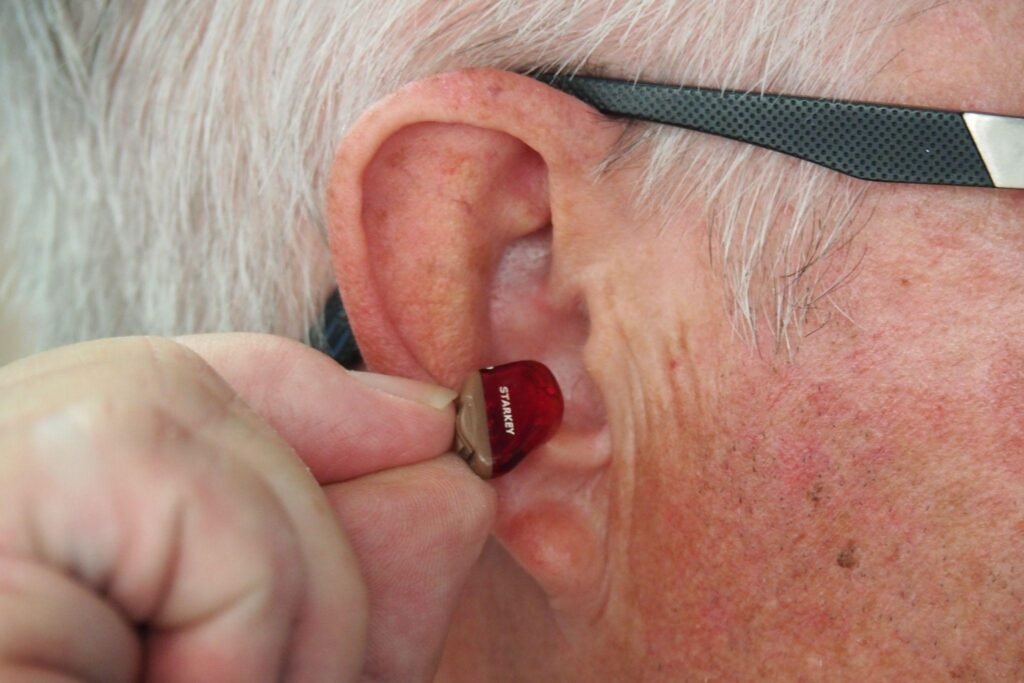
Hearing aids are life-changing devices for individuals who suffer from hearing loss. However, there are many myths and misconceptions surrounding these devices that prevent people from seeking the help they need. From the belief that they are uncomfortable and ineffective to the idea that they are only necessary for elderly individuals, here is evidence-based information to dispel these myths and encourage those with hearing loss to seek the appropriate treatment.
1. Hearing Aids Are Only for the Elderly
While it is true that age is a risk factor for hearing loss, people of all ages can experience hearing loss due to various factors such as exposure to loud noise, genetics, and certain medical conditions.
According to the World Health Organization, approximately millions of young people worldwide are at risk of hearing loss due to exposure to loud music and other environmental factors. It’s important to understand that hearing aids are a treatment option for anyone experiencing hearing loss, regardless of age.
2. Hearing Aids Are Bulky and Unattractive
Modern hearing aids come in various styles and sizes, including small, discreet options that are virtually invisible when worn. Many hearing aids are designed to blend in with the natural contours of the ear, making them both comfortable and attractive.
Additionally, hearing aids can be customized to match a person’s skin tone or hair color, further enhancing their ability to blend in. With the latest advancements in hearing aid technology, many options are available that are stylish and effective in improving a person’s hearing.
3. Hearing Aids Make Everything Sound Too Loud
Hearing aids are designed to amplify sounds selectively, meaning they can adjust to different environments and levels of noise to provide a comfortable listening experience. While it’s possible to experience some adjustment issues with hearing aids, modern hearing aids are designed to amplify sounds selectively, meaning they can adjust to different environments and levels of noise to provide a comfortable listening experience.
This means that hearing aids can help to reduce background noise and amplify speech sounds, making it easier to communicate with others. In addition, most hearing aids come with features like automatic volume control, which adjusts the volume based on the environment, and noise reduction technology, which helps to filter out background noise. With the help of hearing healthcare professionals like HearCanada, you can find the right hearing aids and settings to suit your unique needs and preferences.
4. Hearing Aids Are Uncomfortable and Difficult to Wear
While it’s true that some people may experience some discomfort when first wearing hearing aids, modern hearing aids are designed to be comfortable and easy to wear. They come in a variety of sizes and styles to fit a range of ear shapes and sizes, and they can be customized to fit each person’s unique needs.
Many hearing aids come with features like open-fit designs, which allow for better ventilation and reduce the “plugged up” feeling associated with some hearing aids. In addition, most hearing aids come with multiple settings and programs, which you can adjust to suit your specific needs and preferences.
5. Hearing Aids Will Completely Restore Hearing
While hearing aids can significantly improve a person’s hearing ability, they cannot completely restore hearing to its previous level. Hearing aids work by amplifying sound and making it easier to hear, but they cannot repair damage to the inner ear or reverse hearing loss.
However, with the right hearing aid and adjustments, individuals with hearing loss can significantly improve their ability to communicate and engage with the world around them. It’s important to understand that hearing aids are not a “cure” for hearing loss but rather a tool that can help to manage and mitigate its effects.
6. I Only Need One Hearing Aid If I Have Hearing Loss in One Ear
While it’s true that some people may only need one hearing aid if their hearing loss is mild or unilateral, it’s important to understand that hearing is a complex process that involves both ears working together. Wearing two hearing aids can provide a more natural and balanced hearing experience, allowing for better localization of sound and an improved ability to filter out background noise. In addition, wearing two hearing aids can help to prevent auditory deprivation, which is when the brain stops recognizing certain sounds due to a lack of stimulation. It’s important to consult with a hearing healthcare professional to determine whether one or two hearing aids suit your specific needs and degree of hearing loss.
7. Hearing Aids Are Too Expensive
While it’s true that hearing aids can be a significant investment, there are various options available at different price points to fit a range of budgets. In addition, many insurance plans and Medicare cover some or all of the cost of hearing aids. Financing and payment plans are also available to make hearing aids more affordable.
It’s also important to consider the long-term benefits of investing in hearing aids, such as improved communication, quality of life, and overall health. In many cases, the cost of hearing aids is a worthwhile investment in a person’s well-being and ability to engage with the world around them fully. It’s important to consult with a hearing healthcare professional to discuss the available options and determine the best hearing aid solution for your needs and budget.
8. My Hearing Isn’t Bad Enough for a Hearing Aid
In many cases, individuals with mild to moderate hearing loss can greatly benefit from wearing hearing aids. Even if a person is able to hear some sounds, they may be missing important speech cues or struggling to communicate in noisy environments.
Getting a hearing evaluation from a qualified hearing healthcare professional is the best way to determine the extent of your hearing loss and whether hearing aids are recommended. They can provide valuable insight into how hearing aids can improve your communication and quality of life, even with mild hearing loss. It’s important not to delay seeking treatment for hearing loss, as early intervention can help to prevent further hearing deterioration and improve outcomes.
It’s important to debunk these myths about hearing aids because they can prevent people from seeking treatment for their hearing loss. By understanding the facts, people can make informed decisions about their hearing health and find the right treatment options for their needs.If you or a loved one is experiencing hearing loss, don’t let these myths keep you from seeking treatment. Talk to an audiologist or hearing healthcare professional to learn more about the latest hearing aid technology and other treatment options that can improve your quality of life.



